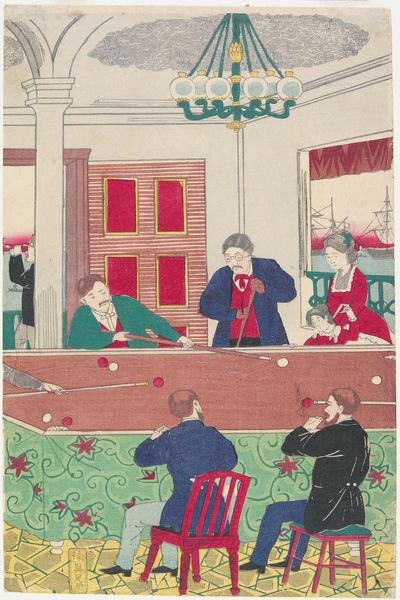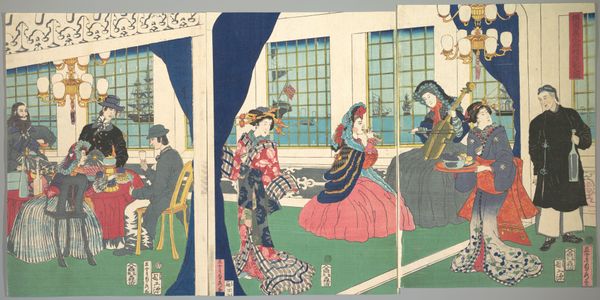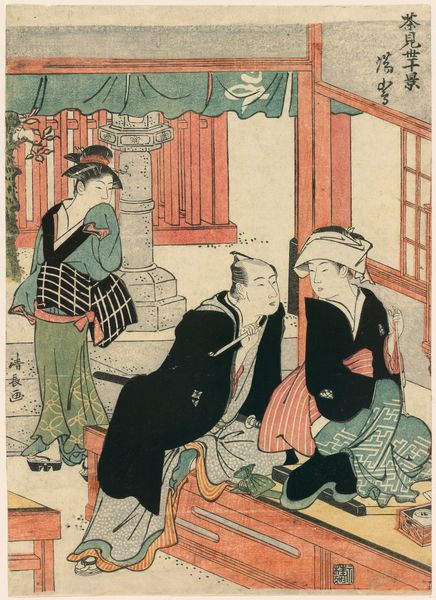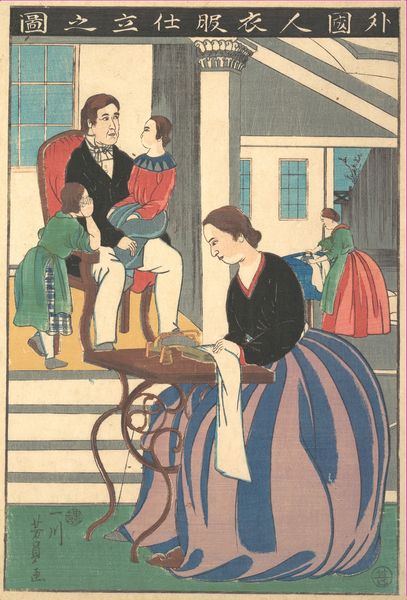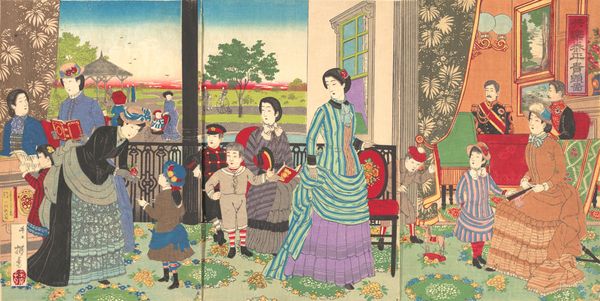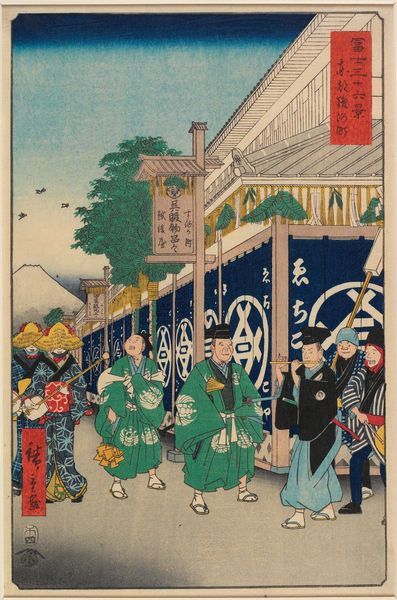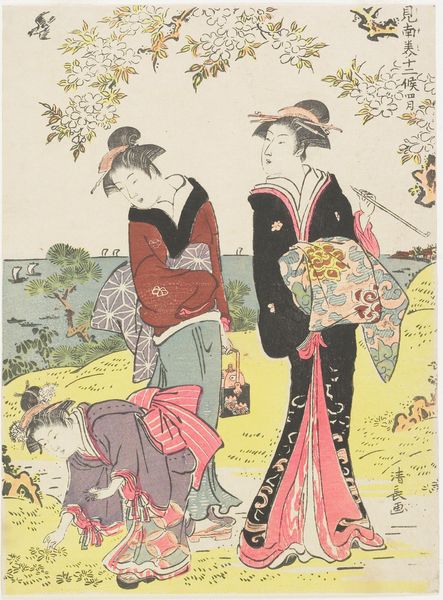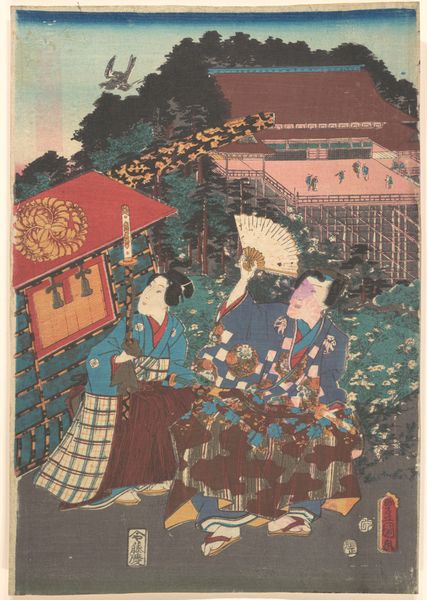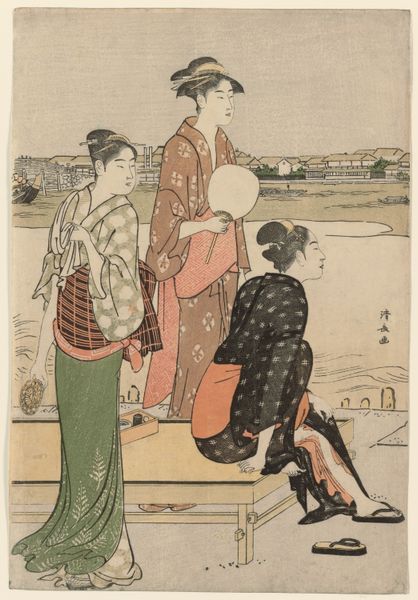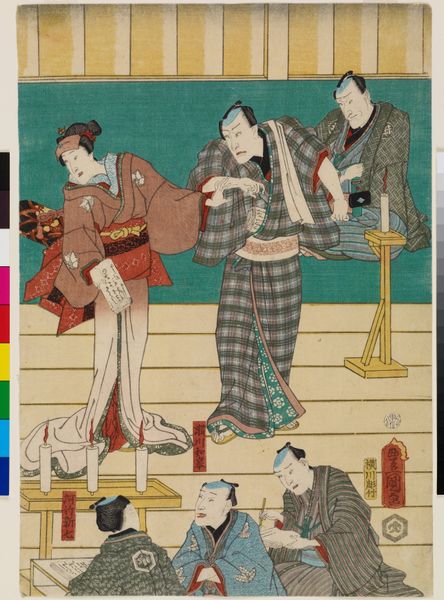
Dimensions: 14 15/16 × 28 3/4 in. (37.94 × 73.03 cm) (image, sheet, assembled; vertical oban)14 15/16 × 9 9/16 in. (38 × 24.3 cm) (image, sheet, vertical ōban)17 15/16 x 14 in. (45.5 x 35.5 cm) (mat, Size I)
Copyright: Public Domain
Curator: First impressions? I'm struck by the cool, slightly detached atmosphere. Everyone's focused, a bit stiff even, like figures arranged for a formal portrait but caught in the middle of some leisurely game. Editor: It certainly evokes a peculiar mood. Let's dive into what we are seeing here. This is "Foreigners at Billiard Game" a print by Utagawa Hiroshige III from around 1872-73. You can find it at the Minneapolis Institute of Art. Look closely and you'll notice that it showcases Westerners in a billiards hall, rendered through the lens of the ukiyo-e tradition. Curator: Ah, Hiroshige III! He was navigating such an interesting cultural moment. What really grabs me are those Western figures. Their solemn faces contrast so strongly with the elaborate interior, almost like they’re in a play within a play. Do you sense that dissonance? Editor: Indeed. Structurally, the artist uses distinct color planes—flat washes of red, blue, and green—to separate areas, creating a layered effect. It reinforces this sensation. Then note the architecture. See how the columns and the chandelier create an almost theatrical framework? Hiroshige seems fascinated with Westerners enjoying themselves. Curator: It's Japonisme meeting straight-laced Victorian England, isn't it? And the whole billiards hall—that's gotta be one of the earliest depictions of this particular Western pastime filtering into Japanese visual culture. This space…this scene it's an odd hybrid. What does this combination really mean though? Editor: Symbolically, the billiard game itself may suggest strategy, competition, and perhaps a coded metaphor for international relations. Also, don’t miss the subtle lines of perspective. The tile floor recedes slightly which offers an unexpected depth in a genre known for its flatness. Curator: True! This little stage is a brilliant microcosm of cultural encounter. Like an observer I am on the outside trying to discern their interior emotions, their goals. Hiroshige’s piece becomes a document about seeing, not just a record. I love it when art makes us question what we think we see, what we presume to know. Editor: Precisely, the brilliance of this piece lies in its structural organization and the tension it sets. It urges us to critically consider the very notion of cultural representation. A beautiful lens into history!
Comments
No comments
Be the first to comment and join the conversation on the ultimate creative platform.
